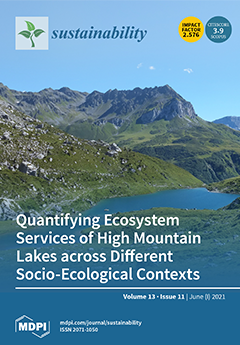A study conducted on the high-speed diesel engine (bore/stroke: 79.5/95.5 mm; 66 kW) running with microalgae oil (MAO100) and diesel fuel (D100) showed that, based on Wibe parameters (
m and
φz), the difference in numerical values of combustion characteristics was
[...] Read more.
A study conducted on the high-speed diesel engine (bore/stroke: 79.5/95.5 mm; 66 kW) running with microalgae oil (MAO100) and diesel fuel (D100) showed that, based on Wibe parameters (
m and
φz), the difference in numerical values of combustion characteristics was ~10% and, in turn, resulted in close energy efficiency indicators (
) for both fuels and the possibility to enhance the NO
x-smoke opacity trade-off. A comparative analysis by mathematical modeling of energy and traction characteristics for the universal multi-purpose diesel engine CAT 3512B HB-SC (1200 kW, 1800 min
−1) confirmed the earlier assumption: at the regimes of external speed characteristics, the difference in
Pme and
ηi for MAO100 and D100 did not exceeded 0.7–2.0% and 2–4%, respectively. With the refinement and development of the interim concept, the model led to the prognostic evaluation of the suitability of MAO100 as fuel for the FPT Industrial Cursor 13 engine (353 kW, 6-cylinders, common-rail) family. For the selected value of the indicated efficiency
= 0.48–0.49, two different combinations of
φz and
m parameters (
φz = 60–70 degCA,
m = 0.5 and
φz = 60 degCA,
m = 1) may be practically realized to achieve the desirable level of maximum combustion pressure
Pmax = 130–150 bar (at
α~2.0). When switching from diesel to MAO100, it is expected that the
will drop by 2–3%, however, an existing reserve in
Pmax that comprises 5–7% will open up room for further optimization of energy efficiency and emission indicators.
Full article





